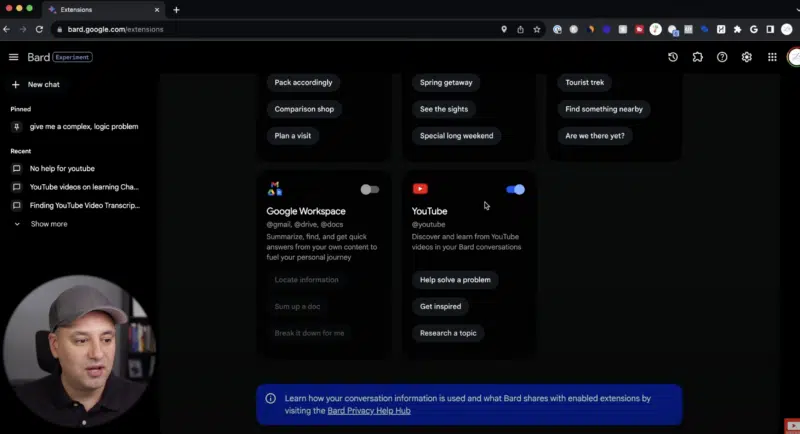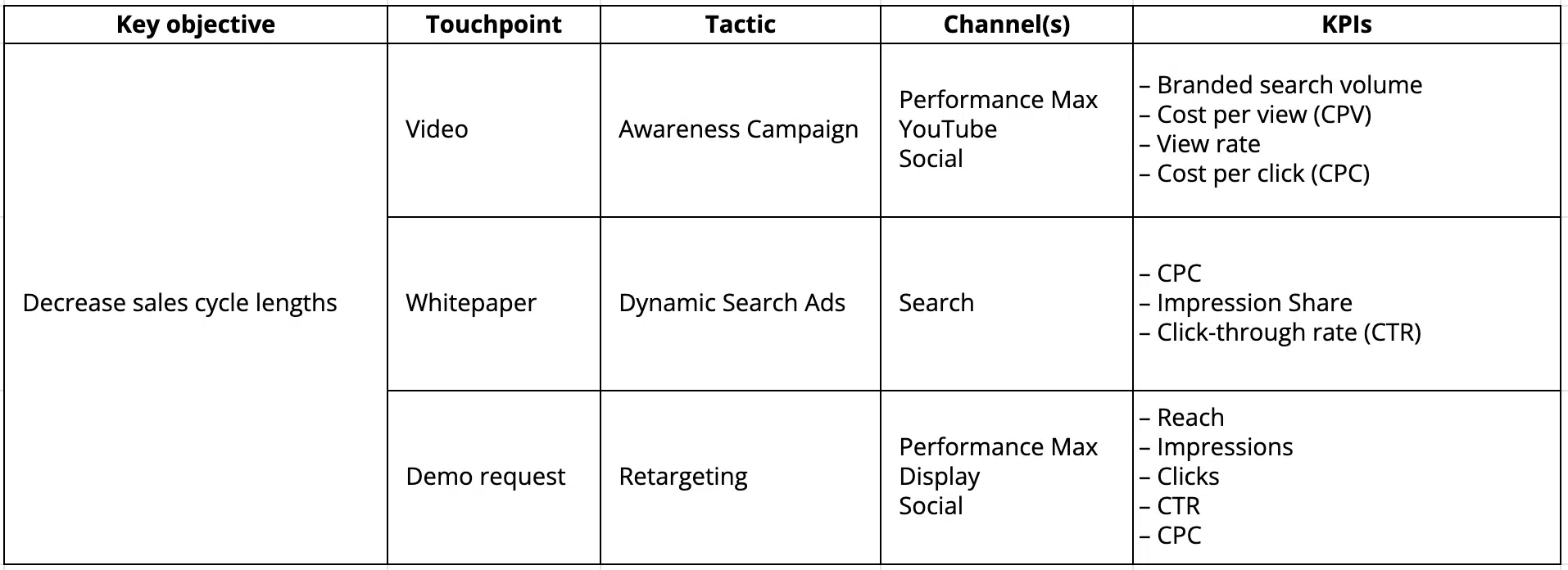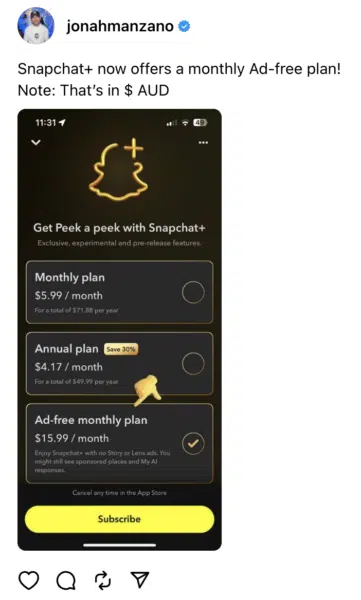The pressure is on for marketing leaders as we round out the year. The directive is to end 2023 strong and prepare for 2024 long before it’s started. Although the new year is still weeks away, budget planning shouldn’t be a last minute shot in the dark.
Budgets are created from company goals, historical data and forward-looking considerations. To make budgeting more difficult, CMOs face challenges going into 2024, including:
- Higher inflation rates than in the recent past and economic uncertainty.
- Pressure to do more with less budget and headcount.
- Urgency to realize the productivity gains promised by AI and other new technologies.
- Messy data and lack of measurement made worse by third-party cookie deprecation.
“Global advertising spend is set to grow […] 8.2% in 2024, a boost that will see the market top $1 trillion for the first time ever,” according to WARC’s Global Ad Spend Outlook 2023/24.
Despite this prediction, budget cuts are common. Competition for ad inventory will continue; CPCs will rise, making improving efficiency all the more necessary.
Current events like the Summer Olympics and US presidential election will create opportunities for brands to grab the spotlight. Advertisers should avoid pulling back on spend if they can afford to and take advantage of these high-profile events.
With that in mind, the ideal PPC budget begins with your targets.
Setting goals
To set achievable goals, start with the big picture and get more granular. Not all channels will achieve the same outcomes, so platforms must work in tandem. Targeting, ad formats and costs per action differ from platform to platform, so a solid cross-channel strategy is crucial to achieving business objectives.
For example, suppose the organization’s goal is to increase revenue. In that case, marketing channels might support that by:
- Improving efficiency in cost per acquisition to stretch dollars further.
- Decreasing sales cycle lengths.
- Increasing brand awareness and/or competitive differentiation.
- Generating higher-ticket sales.
- Decreasing churn, upselling current customers and/or increasing retention rate.
How can each channel play to its strengths to work toward goals? Pull in your platform managers for brainstorming. Create a roadmap to keep objectives and tactics clear among media and consider how success will be measured differently across channels.
For example, if your goal is to decrease sales cycle lengths, you will need to add touchpoints to your buyer journey to drive users to make quicker decisions. A roadmap might look like this:
Evaluating the opportunity
Once your goals are established, it’s time to estimate what’s possible. Tools like the Google Performance can help.
However, measuring available market share on channels like display, social and YouTube is not as simple. Each channel has its own performance forecasting tool to help you gauge a rough estimate of what you might get in return for a specific budget.
For example, Google Performance Planner uses a slider to show what’s possible within the current campaigns. Compare it with your current/past spend.
Think about how much you are willing to pay per result. You will eventually hit a point of diminishing returns. How far are you willing to push the efficiency envelope?
Analyzing the success of past performance by channel is important, especially when faced with budget cuts. A superficial examination may suggest a channel is underperforming, but a deeper dive could reveal that you haven’t accounted for the incremental value it provides.
For instance, you may find LinkedIn’s cost per lead to be higher than other advertising channels, but ask yourself:
- How does the lead quality compare?
- Is there value from a brand perspective in serving ads to users you know are within your desired B2B targeting, even if they aren’t ready to convert?
- Is the time from opportunity to close shorter in this channel?
- Does this channel achieve high-ticket sales than others.
Multitouch attribution is ideal but tricky. Investing in an attribution tool can clarify what channels are performing best and allow for informed optimizations. A marketing team is only as good as the data it has to inform campaigns.
Data cleanup will be a priority for many in 2024. Data clean rooms will continue to see adoption increase in the new year as a way for organizations to standardize their data and allow marketers to have a single source of truth for performance. It will be more important than ever to hold your team accountable for using appropriate tracking measures, i.e., platform conversion tracking, UTMs, proper CRM routing and attribution.
Understanding what has worked or not worked in the past helps you move toward a cross-channel media mix for the coming year. Make adjustments as necessary to work toward meeting your ROAS goals. Turn off what truly isn’t working and reallocate dollars where they will go further.
Dig deeper: Google’s attribution model shake-up: 3 solutions for advertisers
Allocating budget for testing
Advertising is always changing. New features are always coming down the pike for PPC channels.
Advertisers should prepare to allocate a portion of their budget to testing in the new year, setting aside at least 10-15% of their budget to test. Often, incremental budgets are put toward testing in a last-minute effort to boost results. Avoid the scrambling by planning for tests upfront.
When considering a testing budget, think about the audience sizes.
- Hold-out tests don’t require a large budget because the sample size is smaller.
- Tests that run to a broader mass audience will need more to reach statistical significance.
Give your tests enough time and budget to understand the true incrementality.
Dig deeper: Efficiency vs. volume in PPC: 4 tips to strike a balance in incremental conversions
Forecasting outcomes
Once you’ve evaluated the opportunity, identified your channel mix and planned the tests you want to run, tie it all together to forecast the outcome. Consider the following:
- Historical metrics.
- Variance for increasing costs.
- Point of diminishing returns/market saturation.
- Seasonality.
- Changes outside of digital advertising (i.e., product launches, upcoming attribution changes).
Net-new launches are more difficult to forecast, but most platforms have their own forecasting tool to leverage based on audience size and budget. Take historical KPIs for similar campaigns/channels into consideration.
Try reaching out to channel reps for industry or competitor benchmarks and/or poll your network on the KPIs and trends they’re seeing. Additionally, if you work with an advertising agency, lean on them for estimates and industry insights.
Dig deeper: A guide to effective PPC projections
Asking for more money
As those budget conversations begin to happen for the next year, make your case for additional budget compelling. Asking for additional funds requires:
- The art of storytelling.
- Historical data.
- Forecasted return.
- Industry trends.
- Competitive insights.
Company executives set objectives, and they may need help understanding what to expect from digital marketing channels and how success is measured. Not everyone speaks the marketing language. Some executive-level training can help set expectations.
Build an executive view for measuring performance as well. This can help your team think bigger and answer different questions the C-suite cares about.
Decision-makers must understand why you’re asking for a budget increase. Explain what’s being left on the table at the current budget. The more data you have to back up your claims and forecast outcomes, the better your chance of securing that executive buy-in.
Dig deeper: How to deliver PPC results to executives: Get out of the weeds
@media screen and (min-width: 800px) { #div-gpt-ad-3191538-7 { display: flex !important; justify-content: center !important; align-items: center !important; min-width:770px; min-height:260px; }
}
@media screen and (min-width: 1279px) { #div-gpt-ad-3191538-7 { display: flex !important; justify-content: center !important; align-items: center !important; min-width:800px!important; min-height:440px!important; }
}




